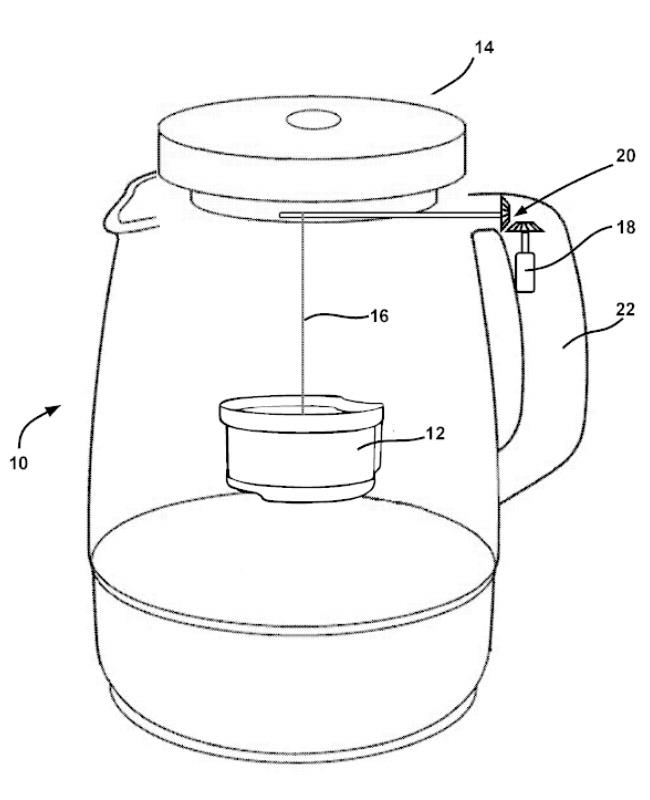UK patent number GB2520768 is designed to improve the way we make a cup of tea. Filed by Kenwood Limited, which is part of the De'Longhi Group, the patent is seeking to protect a product that is an interesting combination of a kettle and a teapot.
The figure below illustrates the novel 'tea-making appliance'. It features an electric heater to heat water to a pre-set temperature, a suspended container (12) for tea leaves, and an electrical arrangement (18) for lowering and raising the container, as well as agitating it during a brewing programme.
 While it could seem an elaborate device for the average tea drinker, the appliance is intended for those with discerning or specific tastes. In particular, it is ideal for making speciality teas, such as green or white teas, or those made from flower, fruit or herbal infusions, which may require a more complex brewing process.
While it could seem an elaborate device for the average tea drinker, the appliance is intended for those with discerning or specific tastes. In particular, it is ideal for making speciality teas, such as green or white teas, or those made from flower, fruit or herbal infusions, which may require a more complex brewing process.
As many tea drinkers will know, the temperature of the water can have a significant effect on the quality of the end product. For example, if the water is too hot, the tea can be burnt, making it taste bitter, and the delicate aroma of the drink can be lost. On the other hand, if the water is too cool, the flavours will not be fully extracted. If the tea leaves are left to steep for too long during the brewing process, this can also make the tea taste bitter and if left for too long, an infused tea could cool to a temperature that is no longer pleasant to drink.
The patent claims to solve all of these issues, by providing a product that carefully controls the temperature of the water, as well as having brewing programmes and a mechanical arrangement intended to remove the tea leaves from the water at the optimal time.
Having identified this growing market for speciality teas, and obtaining patent protection on a product that will clearly appeal to the tea enthusiast, Kenwood has a good chance to position itself as a market leader in this field. As has been seen with the recent trend in domestic coffee makers, there can be a large market for a ‘better’ method of making a hot drink.The broad protection that Kenwood has obtained on this product will make it difficult for competitors to attempt to market something similar.
Additionally, the patent is cleverly worded, using terms such as "lidded vessel", "apertured container" and "suspension device", meaning the scope of the patent is not restricted to a simple kettle/teapot combination as shown in the drawings included in the patent. In fact, the wording would apply to large-scale commercial devices too. The automated process enabled by the technology would be particularly suitable for busy tea shops for example, where multiple teas could be brewed in nearly fully-automatic operations, and then kept warm for extended periods of time until the tea is required. As well as being less labour-intensive, this would reduce the risk of the tea spoiling and help to minimise wastage.
Kenwood has filed corresponding patent applications in Australia, China, Europe and the USA, which is further indication that it could be intending to market the product widely over the coming months. Perhaps enjoying a cup of tea is more universal than we Brits like to believe.











